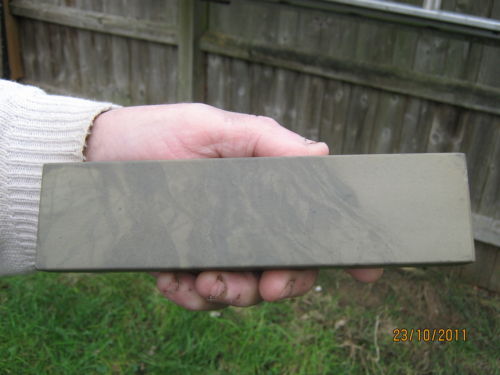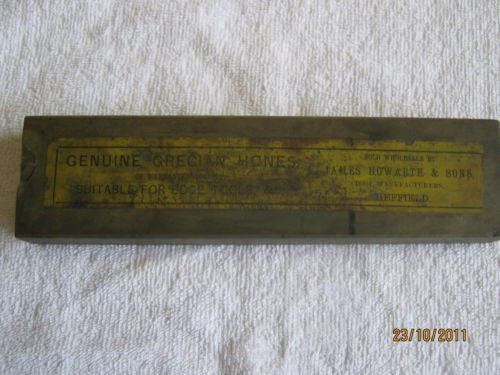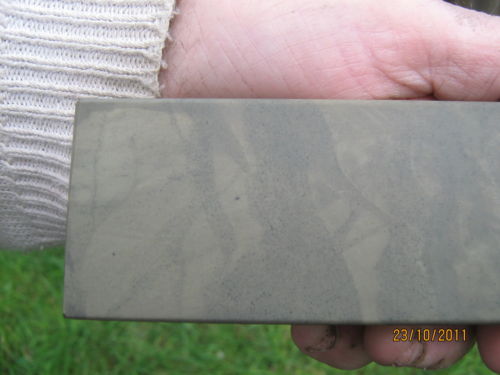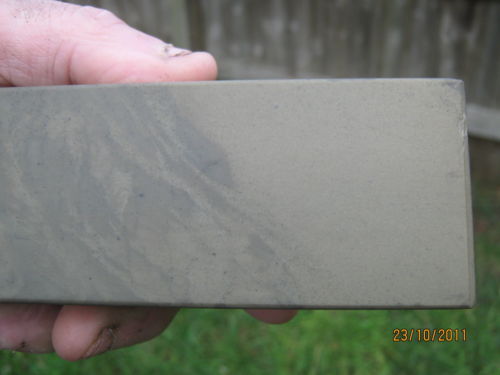Results 11 to 14 of 14
-
09-09-2016, 06:52 PM #11
 ███▓▒░░.RAZORLOVESTONES.░░▒▓███
███▓▒░░.RAZORLOVESTONES.░░▒▓███
-
09-09-2016, 10:16 PM #12

I wouldn't dismiss the possibility for the stone to be a Grecian (from UK) stone. They look a lot like the Llyn Idwal, and the line between which is a Grecian and which a Llyn Idwal is thin, here are some photos of a Grecian stone;




Your stone looks darker but not that different.
Also, the above stone wasn't hard, nowhere near a hard LI, could be used easily with slurry, it was easy to produce it and had nice cutting power.
-
09-09-2016, 10:21 PM #13

Vasilis could you explain the difference ? As far as i remember those are the same "type" of stone with one fact that it depends on the labelling if its a grecian or not...the came from the same quarry, right ?
Here was an older post on that topic:
http://straightrazorpalace.com/hones...n-hones-2.html███▓▒░░.RAZORLOVESTONES.░░▒▓███
-
09-09-2016, 10:35 PM #14

They are... different. I also assumed that they are they come from the same place, since adrspach saw similar stones at the quarry, only to be scolded on the next post from Neil Miller, may he rest in peace, saying that, as long as we have no actual papers or any kind of proof about quarries of the stone, the fact that they kind of look like it is far from definitive evidence.
As for my experience, Llyn Idwal stones are generally harder, have a more subtle pattern and swirls, many of them are even completely uniform, enough to confuse them with a slate, I've done that mistake. As for Grecians, unfortunately, there aren't that many of them with labels to point out the exact differences, but generally, they tend to behave less than glass hard novaculite stones, although we might see flaking in them too. And generally, they can be soft and gritty. Again, without labels of both Llyn Idwal and Grecian stones, we can only judge from our own limited experience with the labeled ones.
In any case, I don't think that they are the same stone, or marketing trick. There is a possibility that they are different layers from the same quarry, but again, we have no proof on that too.
Seriously, the old owners or quarries, or sellers, or users should have kept some kind of notes on them, the problem of being unable to pinpoint the exact location or identity of the stone is far too common in our days.
Still, you have a stone; try it, see if it fits your progression, and enjoy honing, names come after that.
-
The Following User Says Thank You to Vasilis For This Useful Post:
doorsch (09-09-2016)


 21Likes
21Likes LinkBack URL
LinkBack URL About LinkBacks
About LinkBacks







 Reply With Quote
Reply With Quote